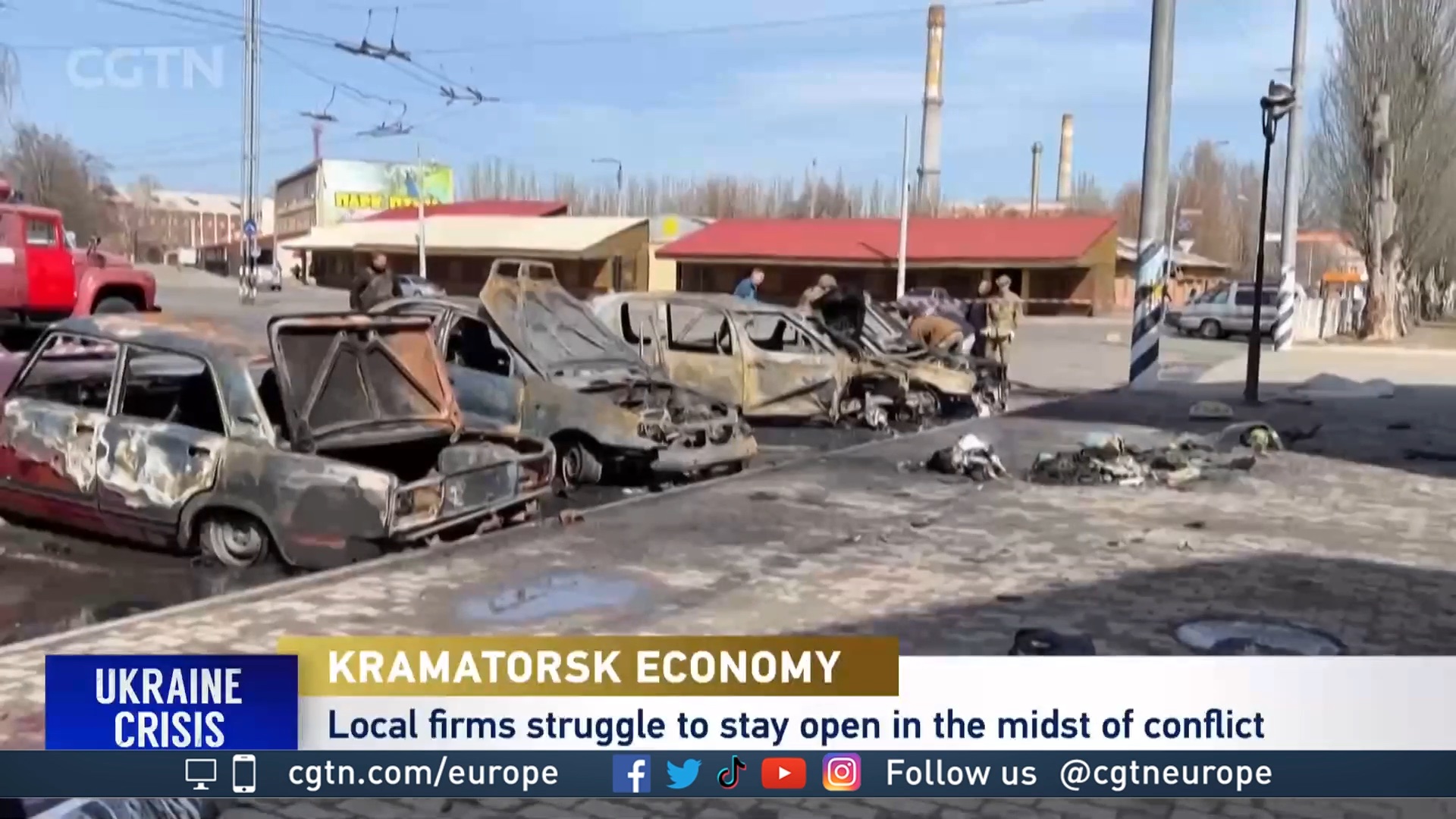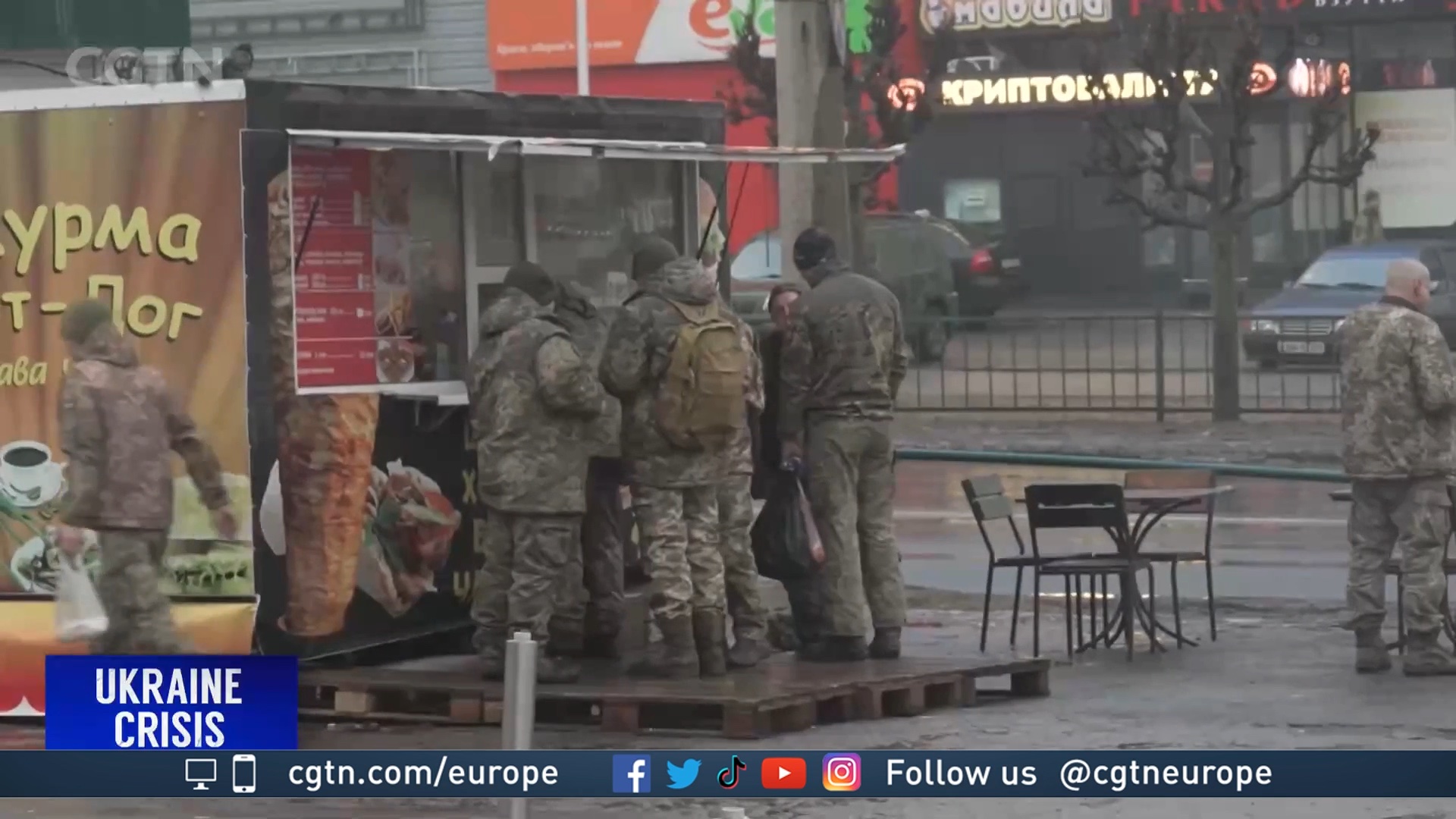02:34

Kramatorsk has been bombed several times in the past year. It's a city that was part of the Donetsk region but now is close to a contested front line between Russian and Ukrainian forces.
Last April, two missiles hit Kramatorsk's busy train station, killing 61 people including seven children who were trying to escape the conflict, as so many were last spring. Russian authorities deny they ordered the strike.
Slowly, trains are starting to arrive from Kyiv again. Tentatively, some people are returning to Kramatorsk. It's part of an area that was the industrial hub of Ukraine, but now it's a time of uncertainty for the economy and precarious for most who live here, as businesses must adapt to survive the conflict.
MORE FROM IOLO AP DAFYDD IN UKRAINE
Preparing for the worst on the Bakhmut frontline
The $2bn cost to rebuild Izium
Meet the frontline volunteers
Olena Klimoshenko is one business owner who fled to the capital but is now back in the city. She's reopening her Duhkova restaurant to focus on serving different clientele.
"Seventy percent of the clientele are military," she tells CGTN. "About a fifth are foreign journalists, and 10 percent are local."
It is a war economy. Most manufacturing has ceased and factories have closed. Servicing soldiers who work, guard and rest in the city is an important source of income. And the central market is the place to stock up on winter uniforms and food to supplement army rations.
Coffee Shop No.1 has stayed open throughout the conflict. It survives despite the handicap of having to close early because of curfew, but barista Polina Shopina remains bullish.
"There is no difficulty in doing business," she insists. "If a place is good, people will return."

Soldiers are now a vital part of the local economy. /CGTN
Soldiers are now a vital part of the local economy. /CGTN
Some are returning to Kramatorsk, but not all. Tens of thousands of people left the city and its surrounding villages. In the city's squares, you can't hear the artillery guns or see the effects of street-to-street fighting just 50 kilometers away in Bakhmut – but then, you can't see or hear much in these usually abandoned squares, which typify the emptiness seen in many eastern Ukrainian towns and cities these days.
Quietness isn't the worst of it: Kramatorsk is still a target. On February 1, a missile destroyed an apartment block; dozens of former residents, mostly pensioners, are now forced to rent or borrow apartments elsewhere.
Alla Tatarovska and her husband Ivan used to be factory workers and had lived in their apartment for decades.
"I don't even understand how we jumped out, because everything filled up here," says Alla, who is 64. "I saw my husband, he was covered in blood, and then there was a knock on the door and soldiers and volunteers ran in. They took him to the hospital for trauma treatment.
"Then my son and I got dressed and a volunteer ran in. We smelled gas, and we left."
People who live and work in Kramatorsk, like many areas in eastern Ukraine, have had to learn to adapt.
Subscribe to Storyboard: A weekly newsletter bringing you the best of CGTN every Friday